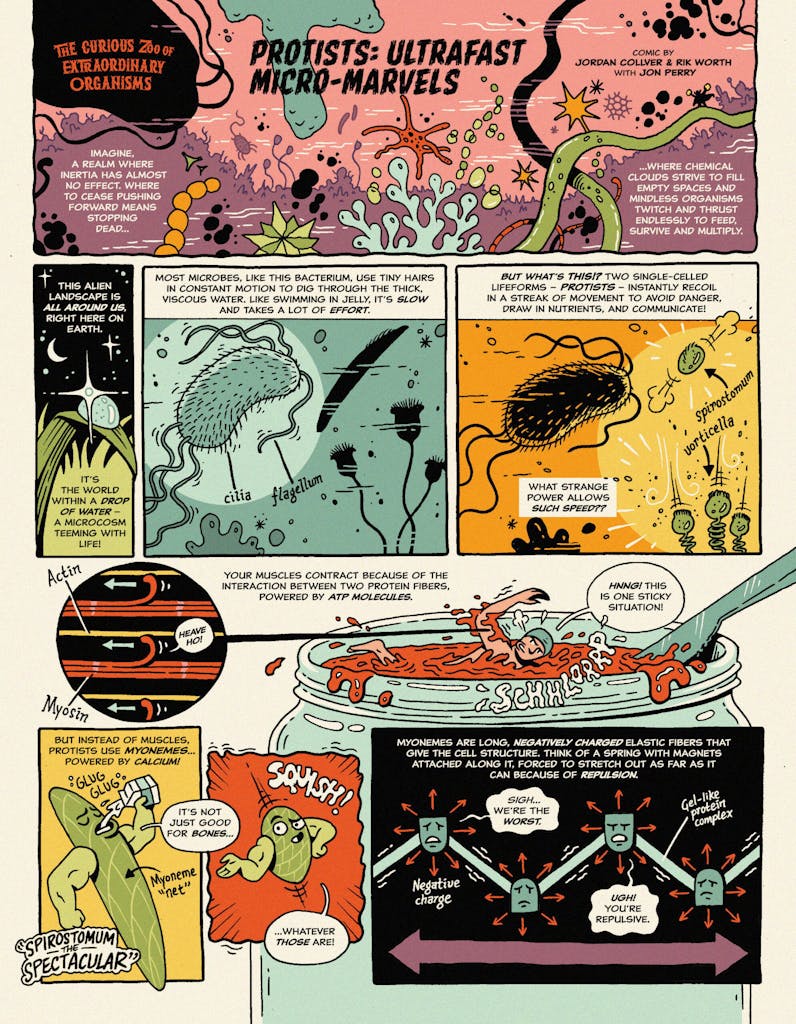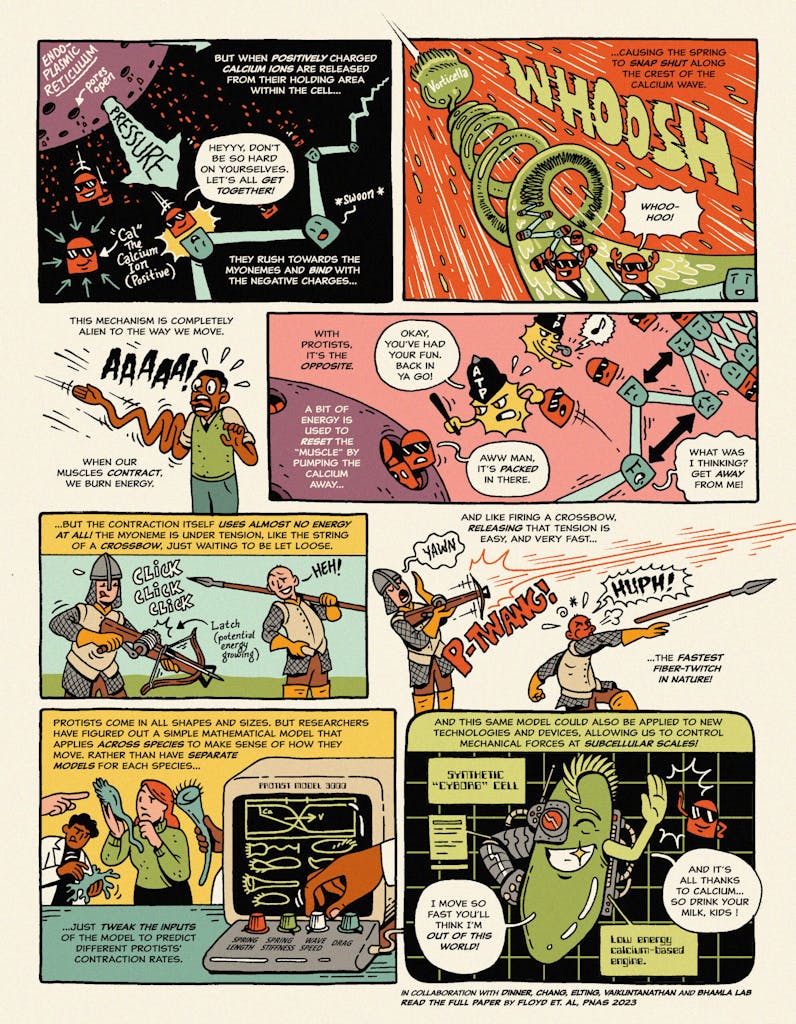IIn a single drop of pond water, you might see a surprising sight: some of the smallest creatures on Earth twisting and turning very quickly, like tiny break dancers. These ciliated protists—single-celled organisms that move around and collect food with small hair-like projections—have evolved to make some of the fastest movements known in the biological world. Their superfast movements help them escape from predators, communicate with other protists, and mix up their food.
Scientists have seen this behavior in many different protist species, but they don't fully understand how they manage to move so fast. This is partly because protists come in a wide variety of shapes and sizes: There are the wine-glass-shaped Vorticella, the cigar-shaped Spirostomum, the trumpet-shaped Stentor, the tear drop-shaped Lacrymaria, and the chandelier-shaped Zoothamnium. Creating a simple math model for the movements of these different species could help synthetic biologists create artificial cells that can imitate the protists' superfast abilities.
Recently, scientists at the Georgia Institute of Technology, along with colleagues from other US universities, tried to create such a model using experimental measurements in two species: the wine-glass-shaped Bhamla Lab and the cigar-shaped Vorticella . The comic below, illustrated by artists Jordan Collver and Rik Worth, explains the lab’s discoveries, which were published in a SpirostomumProceedings of the National Academy of Sciences paper in Jordan Collver is an illustrator and research communicator who uses visual stories in comics to investigate topics of science, nature, and belief. He is a lecturer in science communication at The University of the West of England and the artist for the Eisner-nominated comic.


Hocus Pocus: Magic, Mystery & The Mind . His work has been showcased in The London Natural History Museum,The Journal of Science Communication, Slate, Physics World, Science for the People, Skeptical Inquirer, The Nib , and various comic collections. He seems Canadian but lives in Bristol, UK. You can find his work at @JordanCollver andhttps://jordancollver.myportfolio.com/ Rik Worth is a freelance comic book writer and journalist based in Leeds, England.
When he isn’t writing about culture and class, he creates comics about history. His articles have been featured in The Independent, Huffington Post UK, Prospect Magazine and How tiny one-celled protists achieve their strange and remarkable abilities..



